Certain armies were well known for their practice of adopting firearms with unique characteristics. Whether this was the result of a fascination with a certain mechanical peculiarity, the influence of some preeminent engineer or administrator, national pride, financial constraints or lack of outside influences, certain nations have tended to produce military small arms with a “national character.”Perhaps none is better known then the Austro-Hungarian Empire. The handguns used by the empire during this period — such as the massive Gasser 11mm Cavallerie-Revolver M.1870 revolver — reinforced this trend towards unique (oddball?) designs. Fortunately in the area of rifle design the Austro-Hungarian army found salvation in the talents of Ferdinand von Mannlicher. And while his clip loading rifles were indeed the first truly practical military repeaters they are better known for their straight-pull bolt action when everyone else in the world was going with a turn bolt design.
In 1898, the Austro-Hungarian army made its first hesitant steps towards modernizing their handguns when they adopted the 8mm Rast & Gasser Infanterierevolver. The late 19th Century saw the development of the first successful, albeit less than practical, semiautomatic pistols. Several Central European gun designers became fascinated with adapting Mauser’s new charger (stripper clip) loading system to the new breed of self-loading pistols. And while the resulting pistols cannot be considered overly practical it should come as no surprise that they would attain their greatest popularity within the Austro-Hungarian Empire. Karel Krnka (1858–1926), a Czech engineer who was one of the more prolific firearms designers of his day. In 1895 he patented a semiautomatic pistol which had two features that became trademarks of his pistol designs: a long recoil operating system and a non-detachable magazine within the grip that was loaded with chargers. In 1898, Krnka went to work at the Georg Roth Patronenfabrik in Lichtenwörth, Austria which provided him with the means to perfect his pistol.1 As Roth’s factory did not possess the facilities to manufacture firearms it was arranged for Krnka’s pistol to be produced by the Sauer Company in Germany around 1900 as the 7,65mm Roth-Sauer Selbstladepistole.2 While commercial success and military orders at first eluded them, Krnka’s (and Roth’s) fortunes changed in 1905 when the Austro-Hungarian army announced a series of trials with the aim of finding a semiautomatic pistol. Roth offered an improved Krnka design for consideration, and after trials against pistols submitted by Luger and Mauser it was adopted in 1907 as the 8mm Repetier-Pistole M.7 (a.k.a M.7 Roth-Krnka, M.07 Roth-Steyr).
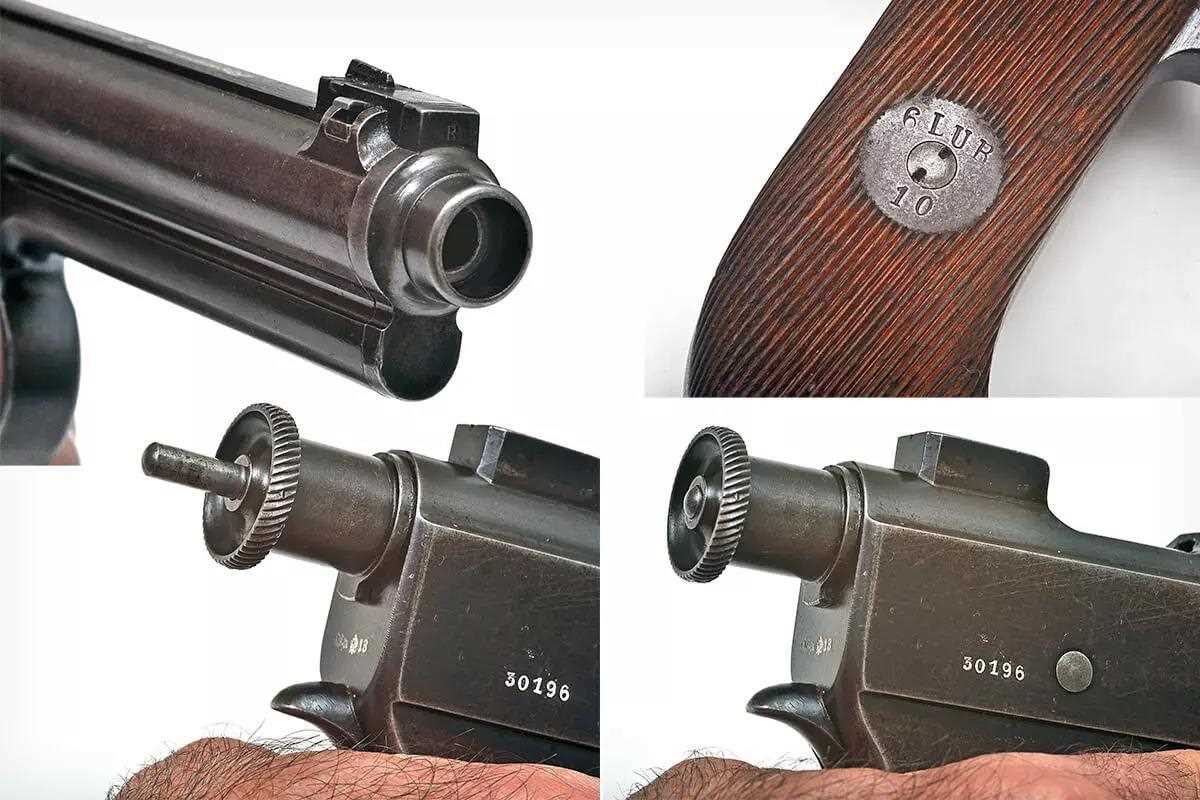
Note: Austria-Hungary the first major military power to adopt a semiauto pistol as their standard issue handgun. And before my overworked editor is deluged by irate letters from readers let me add that while the Swiss adopted the Parabellum pistol in 1900 I do not consider them a “major” military power. And while the Parabellum was also taken into service in Germany in 1904, it was only used by the Imperial Navy and did not become general issue until after 1908.
The M.7 followed the distinctive outline of the earlier Roth-Sauer with rounded grip, tubular receiver, and a separate bolt with an exposed knurled head for cocking. It utilized a rotating barrel to lock and unlock the action which, while it was characteristic of other Austrian service pistols, saw little use elsewhere. The bolt extends the full length of the tubular receiver. The forward portion of the bolt is hollowed out to surround the barrel, both of which are inserted into the receiver from the front. Four cam lugs on the barrel, two near the muzzle and two near the chamber, move within helical grooves in the muzzle bushing and at the rear of the hollowed out portion of the bolt, locking the bolt and barrel together. When fired the M.7’s bolt and barrel recoil together about half an inch whereupon the forward lugs move in the barrel bushing grooves to rotate the barrel which in turn rotates the two lugs at the rear of the barrel approximately 90 degrees to unlock the bolt from the barrel and allow it to continue rearward extracting and ejecting the empty cartridge. The bolt is then pulled forward by the recoil spring, stripping the next cartridge from the magazine and chambering it. As the barrel moves forward, it is rotated in the opposite direction once again locking again.
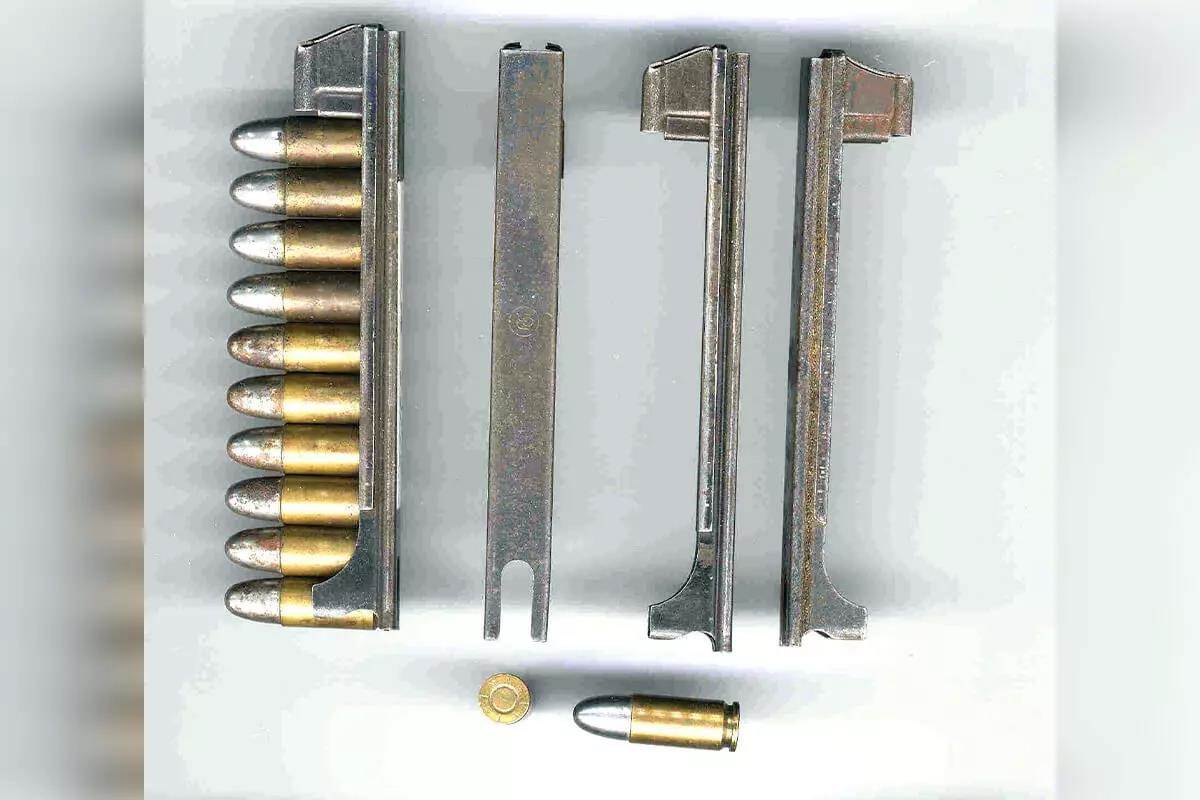
The M.7 was loaded by pulling the breech bolt to the rear and pushing in a small square button on the left rear of the frame locking it in place. A ten round charger was then inserted into the guides at the rear of the ejection port and the cartridges pushed down into the magazine. The clip was then removed, and the bolt retracted slightly, allowing it to travel forward and chamber a round. As the bolt moved forward the striker was held in a partially cocked position and its tail projected out the end of the breech bolt knob where it acted as a loaded chamber indicator. It utilized a rather unique trigger system in which a semi-double action trigger — with a fairly long and heavy stroke — drew back the partially cocked striker to full cock before releasing it to fire a cartridge. Unloading was accomplished by pulling the bolt to the rear and locking it open and then pressing the lever above the left grip panel which allowed the contents of the magazine to be ejected out the top of the pistol.
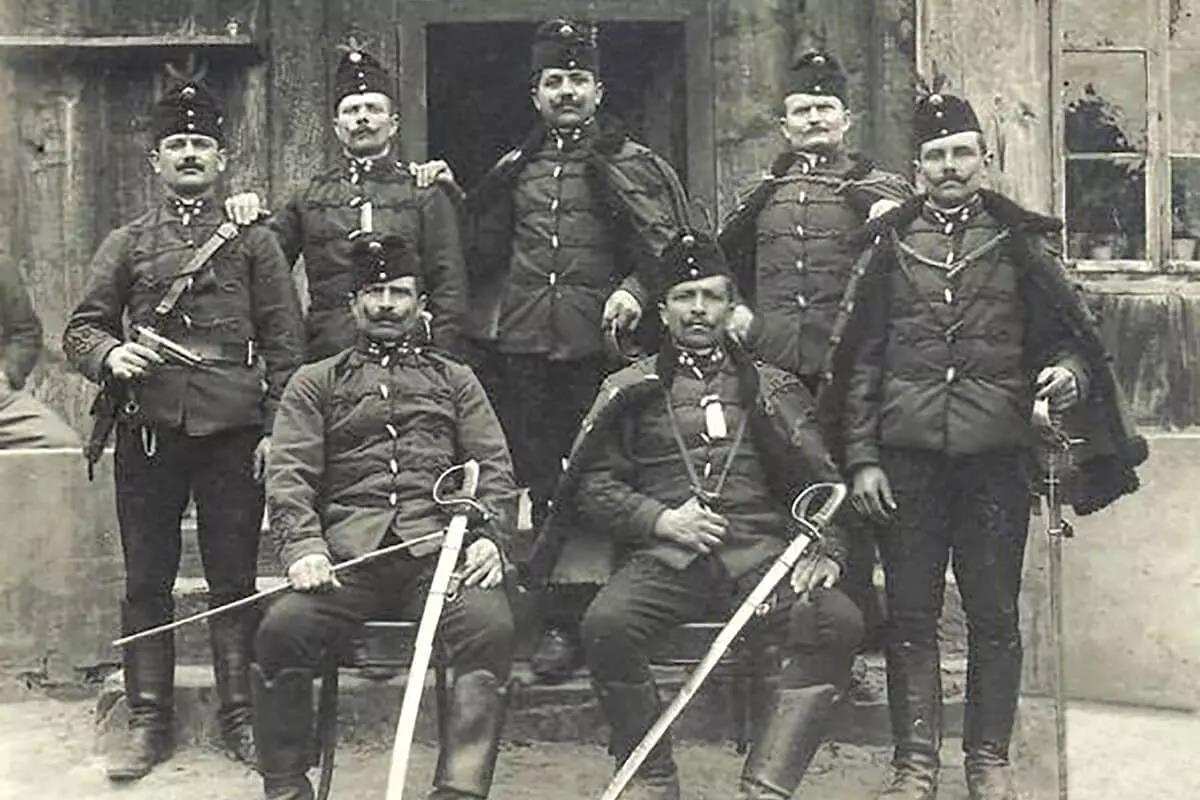
The cavalry — the most prestigious branch of the Austro-Hungarian armed forces — felt that the M.7 had all the advantages of the new semiauto pistols: high magazine capacity, fast reloading and easier handling; but with the traditional safety features of a revolver type trigger. It was felt this combination of features would prevent accidents of the type envisioned if troopers on frisky mounts were armed with pistols with light, single action triggers. Roth arranged for the M.7 to be manufactured by the Österreichische Waffenfabrik-Gessellschaft of Steyr. Additional M.7s were also produced by Femaru Fegyver es Gepgyar in Budapest, Hungary and the manufacturer’s name is found on the top of the receiver. Limited production appears to have continued at both facilities after WWI.
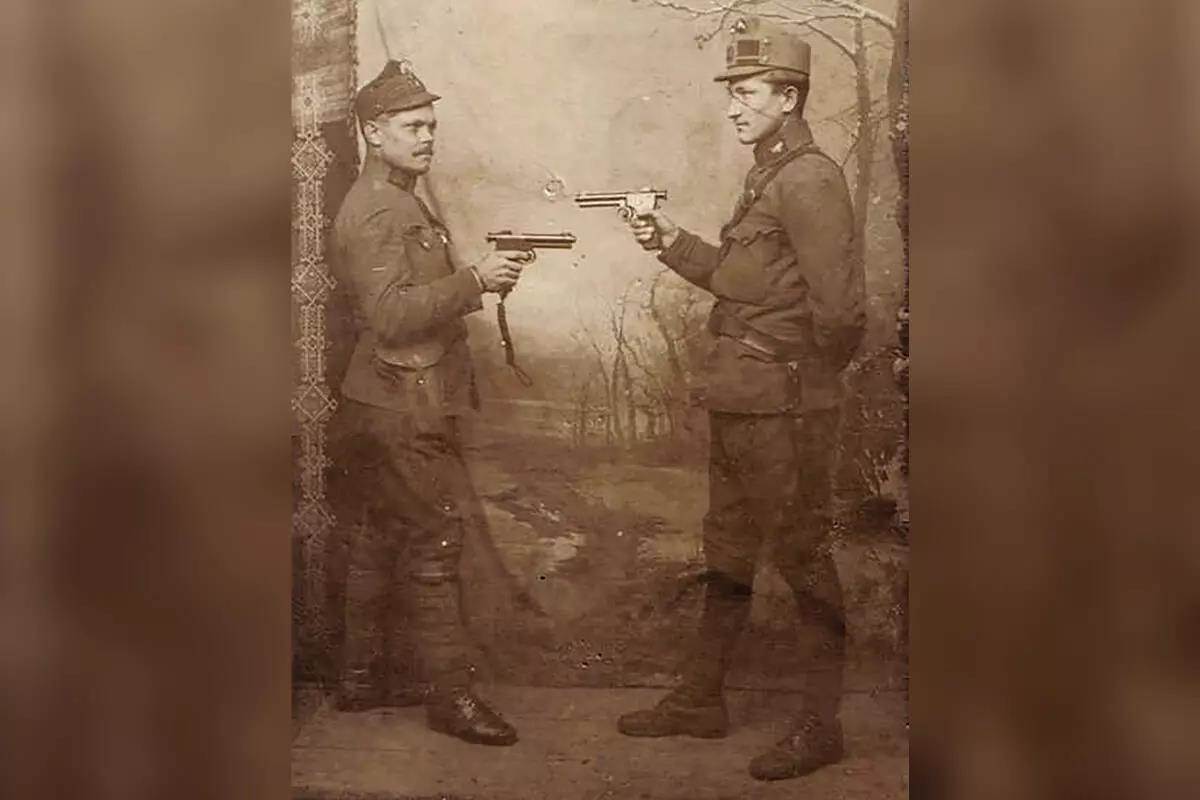
The M.7 was chambered for a proprietary cartridge, the 8mm M.7 scharfe Pistolepatrone (a.k.a. 8mm Roth-Steyr). It consisted of a straight walled, rimless case 18.5mm long whose 116-grain full metal jacketed (FMJ) bullet had a rated muzzle velocity of 1,088 feet per second (fps). According to Austrian author and military historian Josef Mötz, it was used by all branches of the Austro-Hungarian armed forces and navy and limited numbers were released on the civilian market. Late in the war many M.7s were issued to the Flying Corps where they were referred to as “Flieger-Pistolen.” After the war, both Austria and Hungary continued to use the M.7 pistols while numbers were supplied as war reparations to Serbia, Greece, Rumania, Italy,
Poland and Czechoslovakia.
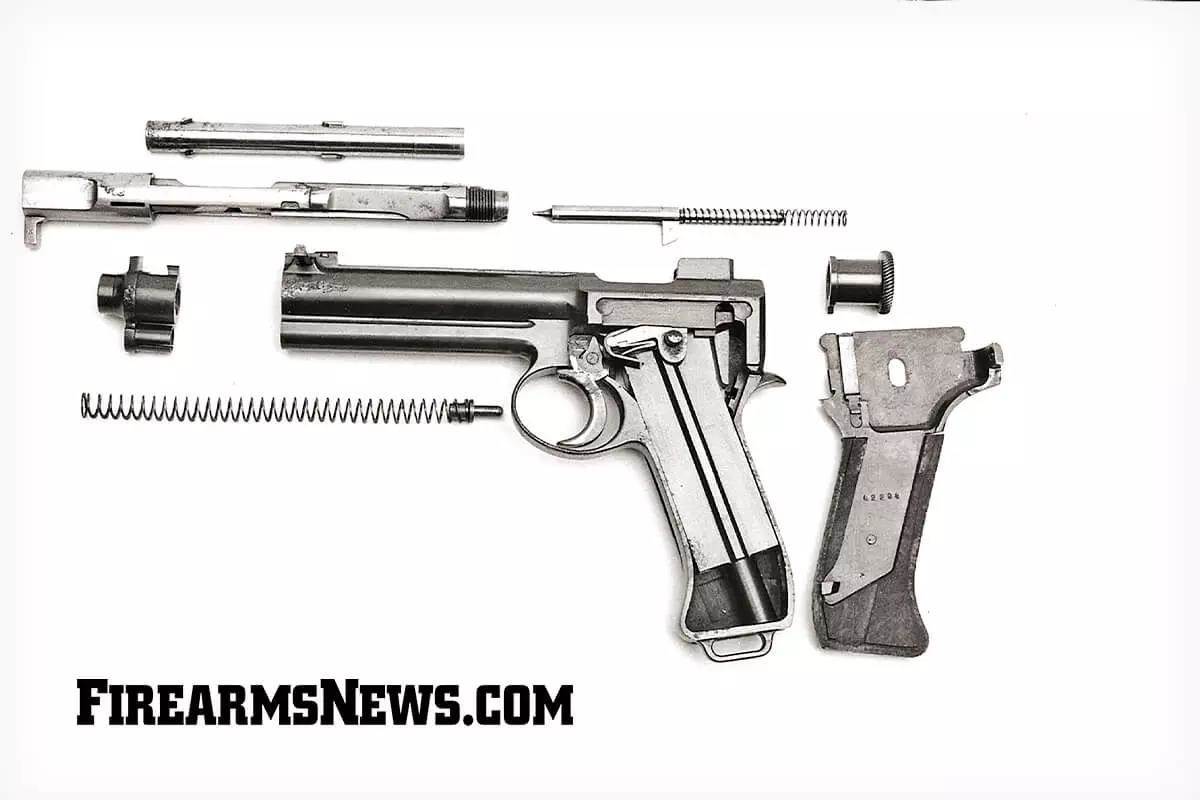
When Hitler incorporated Austria into the German Reich in 1938, most Austrian army units were reequipped with German equipment while Austrian weapons, including the M.7 pistols were put into storage. As WWII wore on and the Wehrmacht became desperate for additional small arms some M.7 pistols were issued. Others showed up in the hands of partisans in the Balkans while the Italians continued to manufacture 8mm M.7 ammunition for theirs. My friend Tim Hawkins provided me a Steyr-made M.7 whose acceptance marks showing it had been taken into service in1909 and had a marking disc indicating it was the 10th pistol issued to the Landwehr Ulan Regiment 6. I test fired Tim’s M.7 offhand from seven yards. It pointed very naturally, and the trigger pull had a definite two stage stroke with a fairly light let off. Despite its small sights, and using Fiocchi 8mm Steyr ammunition, I put all my rounds in the target’s A zone and “head.” And despite its age I did not experience a single malfunction. Not too bad for ein altes Mädchen (an old girl) from Steyr.
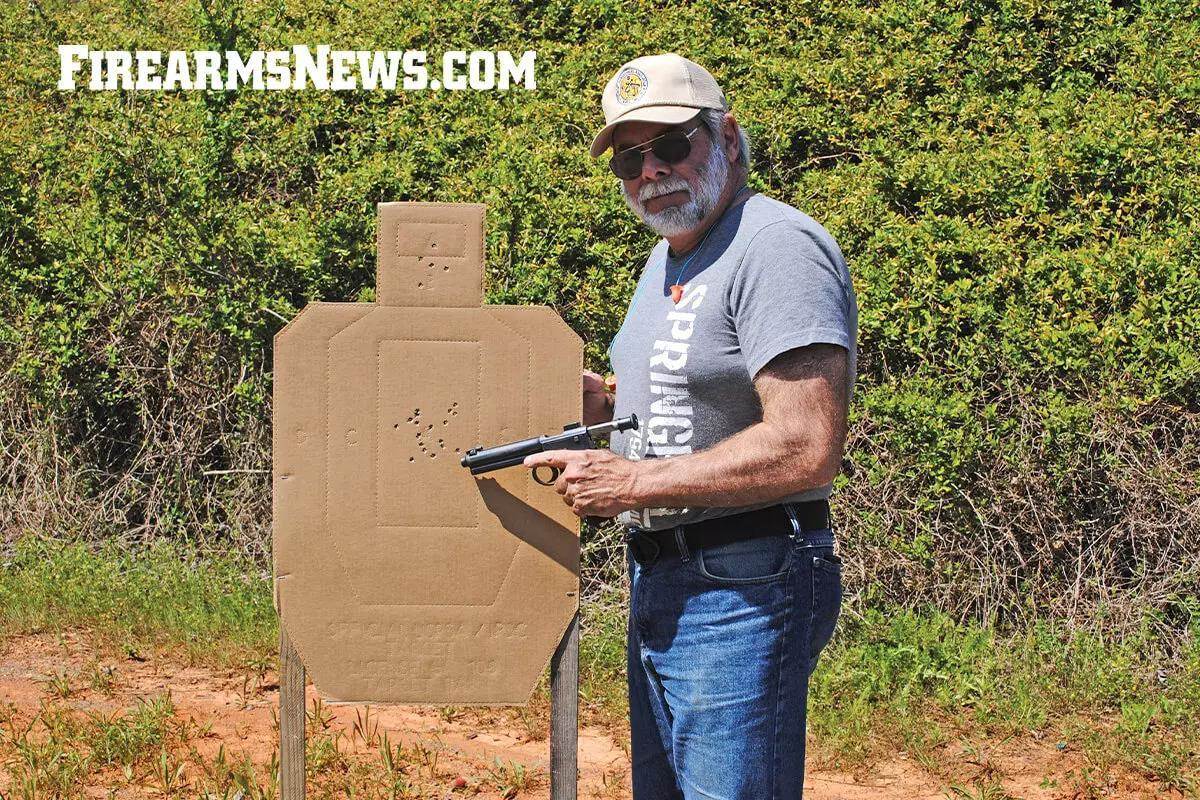
8mm Repeitier-Pistole M.7 Specs
- Caliber: 8mm M.7 scharfe Pistolen-Patrone
- Overall Length: 9.2 in.
- Barrel Length: 5.2 in.
- Weight: 36 oz.
- Magazine: 10 rds., charger loaded
- Sights: Inverted V blade (front), V notch (rear)
- Value: $2,000+
Read the full article here


